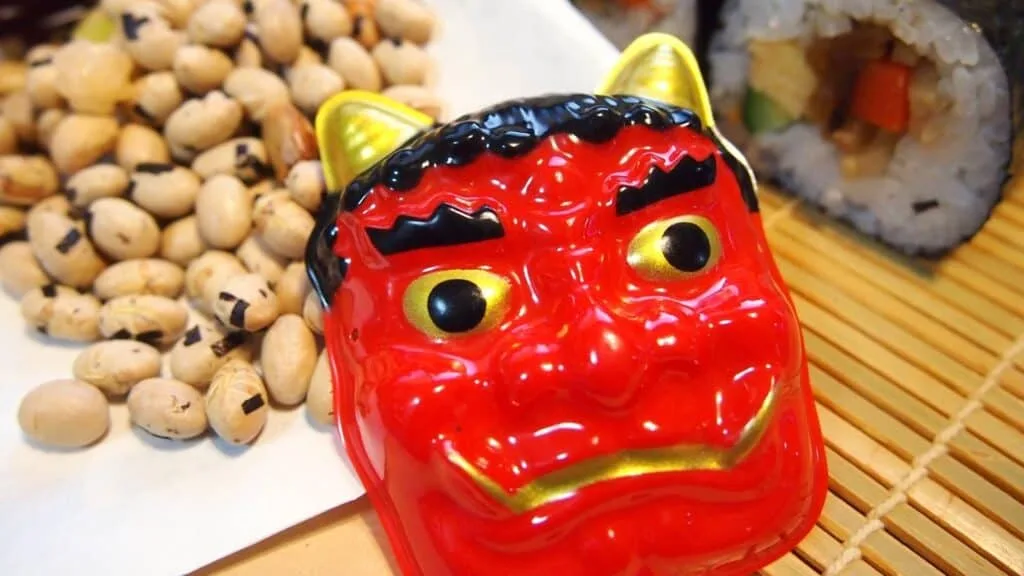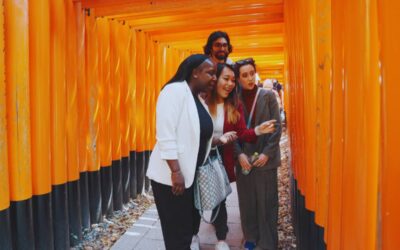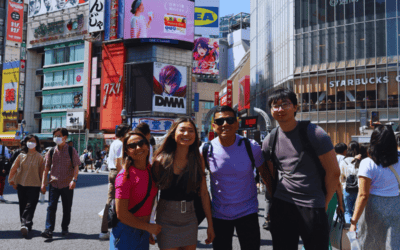Have you ever witnessed the fascinating Japanese ritual of sowing beans or the tradition of eating large sushi rolls? These customs are integral to Setsubun, a celebration steeped in history and symbolism. Setsubun marks the transition of seasons and invites renewal while driving away misfortune.
Join us as we delve into the origins of Setsubun, its connection to the ancient calendar concept of Lichun, and the traditions that make it a cherished event. Read on to learn about the significance of Setsubun and how it is observed today.
When is Setsubun in 2025?

In 2025, Setsubun will be celebrated on Sunday, 2nd February. This day precedes the traditional Japanese beginning of spring, known as Risshun. Observing Setsubun at the turn of seasons is a way to symbolise renewal and banish negative energies. It is a day for cleansing and welcoming prosperity.
What is Setsubun?
Setsubun is a unique Japanese event aimed at warding off evil spirits and promoting health and good fortune. In ancient times, people believed that seasonal changes, particularly during winter, allowed negative forces to infiltrate homes, bringing illness and misfortune.
To counter this, Setsubun traditions evolved, drawing inspiration from Nuo folk religion, a ceremonial prayer for health. The practise of Oniyarai, or demon-chasing, eventually spread from temples and shrines to households, becoming a staple of Setsubun.
The Origins of Setsubun

The origins of Setsubun trace back to ancient China, arriving in Japan during the Heian period when Chinese cultural influences were embraced. Initially a ritual led by Onmyoji (spiritual practitioners), this custom aimed to cleanse homes of bad luck on New Year’s Eve.
The practise, described in historical texts like the Zoku Nihon Shoki as an “epidemic payment,” waned during the Edo period. Over time, it evolved into the modern Setsubun tradition, where roasted soybeans are sown to expel demons and invite health and happiness.
When Does Setsubun Occur?
Most years, Setsubun takes place on 3rd February, though occasionally it shifts to 2nd or 4th February, depending on the lunar calendar. In 2021, Setsubun fell on 2nd February for the first time in over a century. This celebration aligns with Rising Spring, one of the 24 solar terms marking seasonal transitions, with Lichun signifying the sun’s position at 315 degrees on the ecliptic.
Why Sow Roasted Soybeans on Setsubun?

The act of sowing roasted soybeans during Setsubun is rooted in the Japanese belief in Kotodama—the mystical power of words and names. Soybeans, or mame, are thought to symbolise defeating demons, as the characters for “demon” and “eye” are embedded within the word. By scattering beans, participants “destroy the demon’s eyes” and expel malevolent spirits. Soybeans also represent blessings from agricultural gods, reinforcing their use in this symbolic ritual.
How to Participate in Setsubun Bean-Sowing
Wondering how to sow beans correctly during Setsubun? Here’s a step-by-step guide:
- Prepare the Beans: The day before Setsubun, place roasted soybeans in a container and offer them on a Kamidana (Shinto altar) or a clean white paper if no altar is available, positioning them in a high place.
- Sow the Beans: On Setsubun night, ideally between 8 and 10 pm, sprinkle the beans around your home’s entrances, moving from the innermost rooms outward. Chant “Oni wa soto” (Demons out) and “Fuku wa uchi” (Fortune in) as you go. After completing the ritual, ensure doors are locked to “seal out” demons.
- Eat the Beans: After sowing, eat one bean more than your age to safeguard against bad luck. Alternatively, sip Fukucha tea by steeping three soybeans, kelp, and pickled plums in hot water.
Foods Eaten During Setsubun

Grilled Sardines (Iwashi)
The pungent aroma of grilled iwashi is believed to repel demons. Popular Setsubun dishes include grilled iwashi, iwashi miso soup, or ginger-infused sardines.
Ehomaki
Ehomaki, a large sushi roll, is enjoyed silently while facing the year’s designated lucky direction. Made with seven ingredients representing the Seven Lucky Gods, this tradition originated in Osaka during the Edo period as a prayer for business success.
Peanuts
In regions like Hokkaido, Tohoku, and Chiba, people often use peanuts instead of soybeans, as they are easier to clean up. This practise became popular between 1940 and 1955, particularly in peanut-growing areas like Chiba, where crushed peanuts are also used as a topping for sardines.
Setsubun Soba

Soba noodles, symbolising longevity, were commonly eaten on Setsubun during the Edo period. This custom eventually shifted to New Year’s Eve but persists in regions like Nagano and Shimane, where Setsubun soba remains a tradition.
Embrace the Spirit of Setsubun
Will you be sowing beans or sampling traditional Setsubun foods this year? Whether participating in Oniyarai, enjoying Ehomaki, or grilling iwashi, this age-old celebration offers a fascinating glimpse into Japanese culture. Setsubun is not just a ritual; it’s a reminder of renewal, health, and the power of tradition.








